Global maritime domain awareness and vessel analysis
RoadmapUpcoming product improvements and past deliveries
Arming research analysts with hidden clues to their maritime domain
Global maritime domain awareness and vessel analysis
RoadmapUpcoming product improvements and past deliveries
Arming research analysts with hidden clues to their maritime domain
See through regular maritime traffic and focus on high risk activity and vessels
Starboard marries advanced data science and multiple information sources with intuitive web-based software to deliver a secure common operating picture for the maritime domain. It supports governments, border security teams, NGOs, and fisheries organisations.
- · Hitchhiker pest risk
- · Encounter
- · 25 Feb, 07:36 - 20:26
- · 12h 50m encounter duration
- · Higher Covid-19 risk
View real-time and historical vessel movements anywhere around the globe
We continually ingest and analyse global automatic identification system (AIS) data from exactEarth, S&P Global Market Intelligence, and Spire — combining the world’s most comprehensive providers. Managing the volume and variable quality of global AIS is a complex big data challenge. We’ve overcome this with a mix of proprietary and open source algorithms and machine learning models. We identify events such as port visits, fishing activity, when two vessels meet at sea, and more.
Detecting and highlighting significant events in a vessel’s history
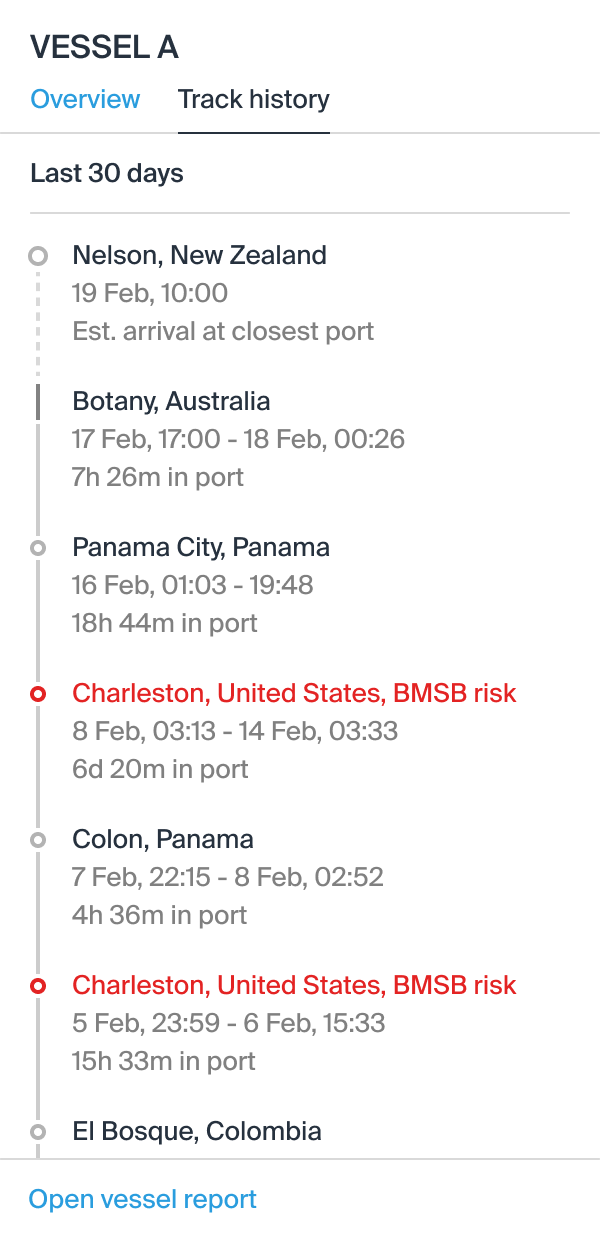
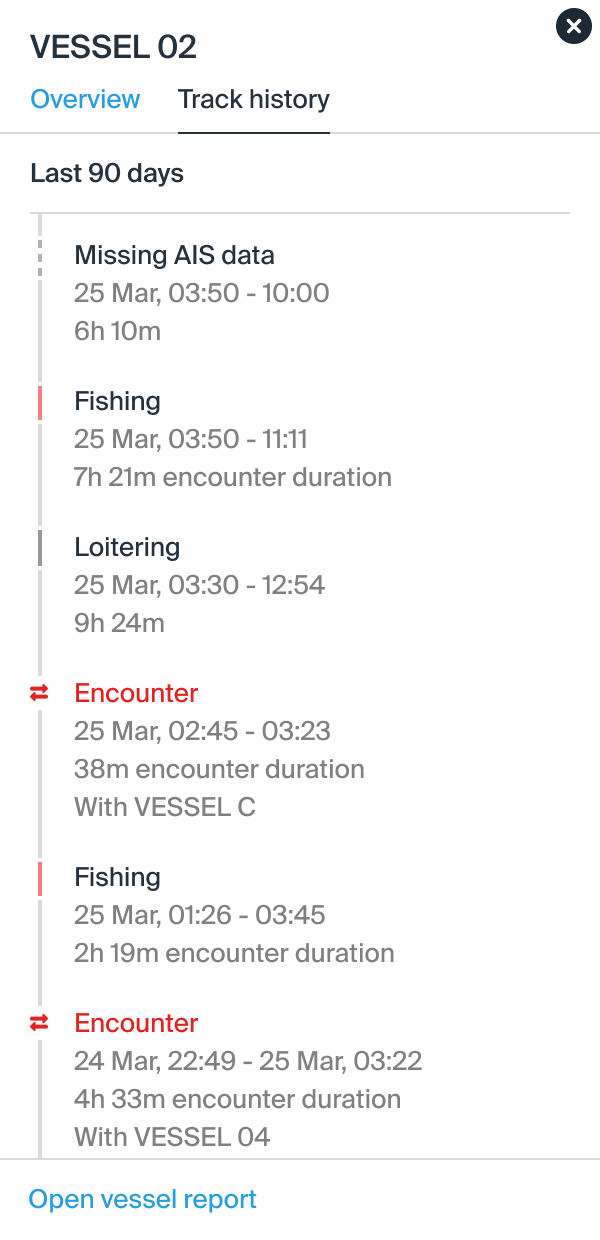
Detecting and highlighting significant events in a vessel’s history

Detecting and highlighting significant events in a vessel’s history
Understand maritime activity in and around your exclusive economic zone
Understand which vessels to focus on and why. Arriving vessels are analysed with bespoke risk models built upon multiple data sources to highlight which vessels are high risk. Currently arriving vessels are assessed for certain biosecurity threats.
Cut through the noise and identify a wide range of anomalous vessel movements.
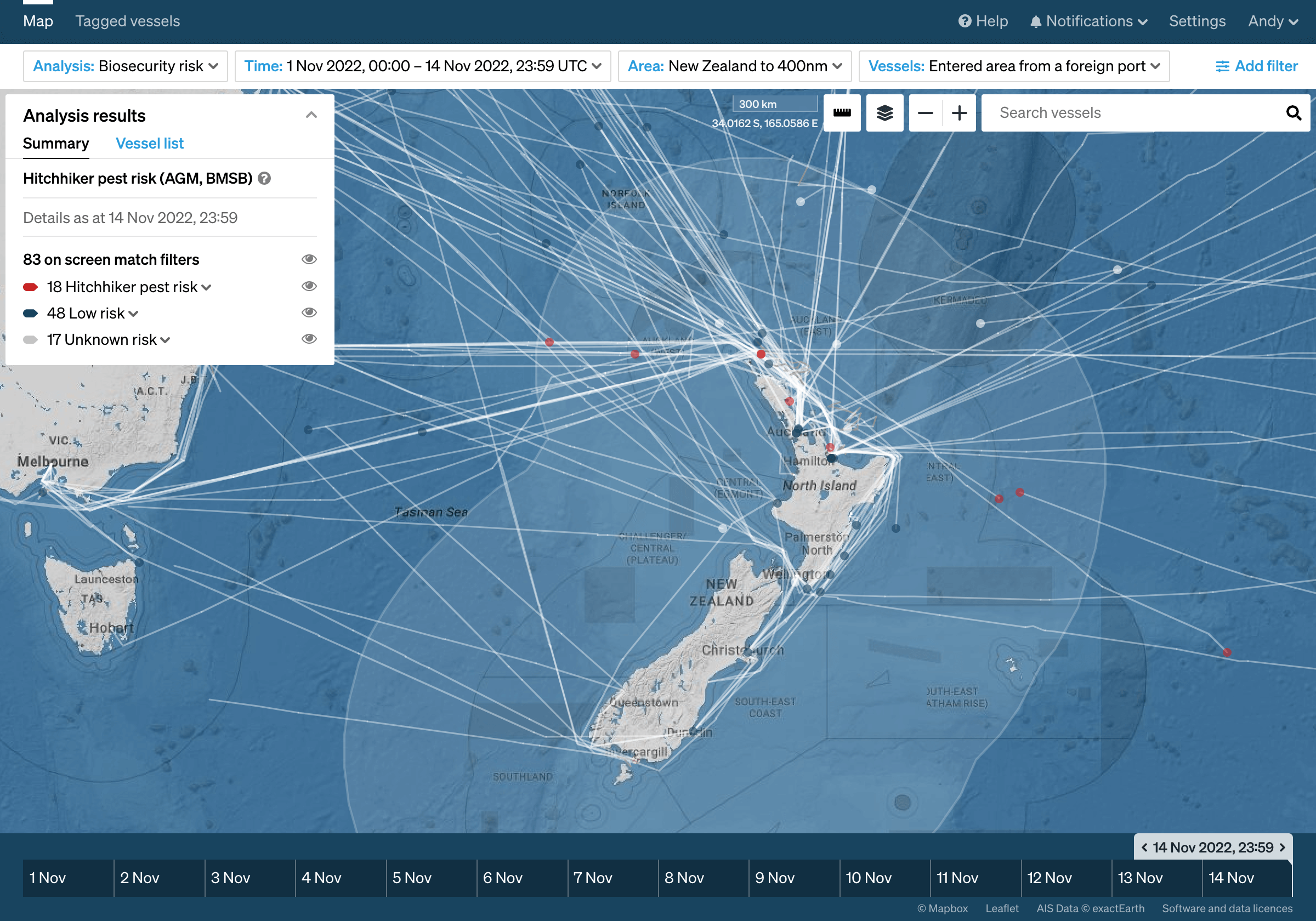
Risk assessing vessels arriving in New Zealand for hitchhiker pests
Run more effective maritime operations and uncover dark vessels
We combine multiple layers of data in real-time to help you gather more intelligence per dollar spent on maritime domain awareness. In the lead up to an operation we partner with you to analyse historical information and vessel movements to help establish where to look and what type of vessels to look for. This determines the most appropriate satellite imagery or data to use during an operation.
During an operation the first layer we use is real-time global vessel movement data, which provides situational awareness. This is coupled with additional, relevant information like regional fisheries databases and any further information added, or within your expert analysts’ knowledge base.
Depending on the target area and vessel type, we’ll add in synthetic aperture radar data, radio frequency emitter locations and optical satellite imagery to provide a comprehensive picture of both reporting and dark vessels in your operation area.
This layered data is turned into intelligence in Starboard and used to direct assets at sea and in the air. We deliberately work from wide, cost-effective data sources to narrow, expensive and high-resolution data sources — helping ensure expensive surveillance returns valuable intelligence.
What happens when vessels are in your maritime domain, but they’re not on your monitoring system? Most commercial and fishing vessels are required to carry an AIS transponder which frequently transmits their location. However, these can be disabled or faulty, and some vessels routinely don’t use them.
To provide a complete picture of both reporting and dark vessels in your area of interest we use additional satellite data — synthetic aperture radar data, radio frequency data and optical satellite imagery. We combine these data sources in near real-time with AIS locations to detect dark vessels at sea, and indicate areas for further investigation. The type of satellite data we use, and which company we partner with, depends on the target vessel type and location. We’re data agnostic and focus on using the most appropriate information for the challenge at hand.
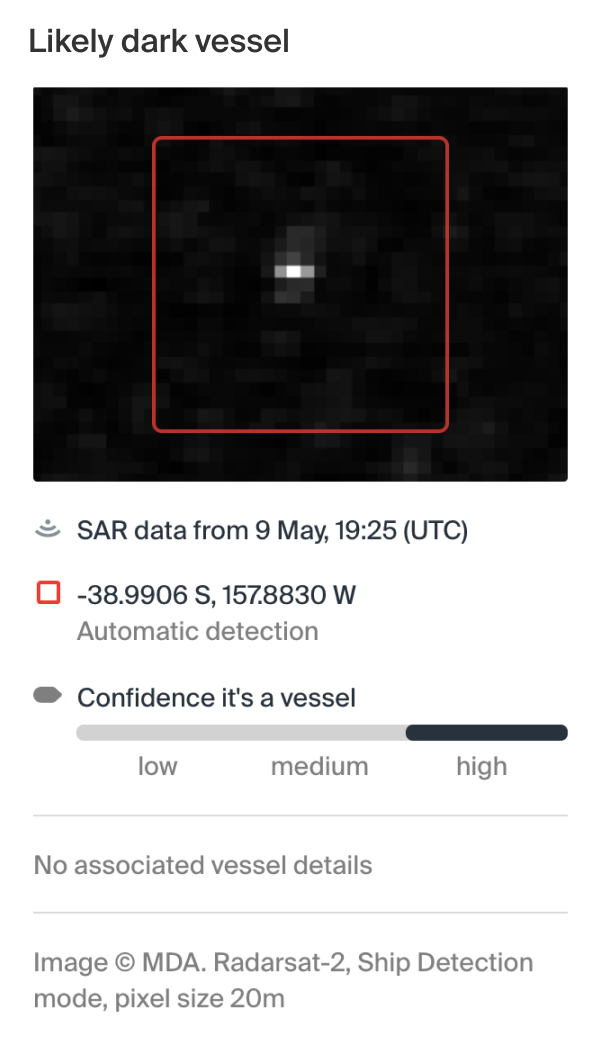

Using additional satellite data analysed with AIS data to detect dark vessels as sea
Monitor areas and vessels of interest
Two vessels meeting at sea may mean they are exchanging items such as fuel, fish, people, or goods. These encounters are detected, flagged, and recorded in the vessel’s history, showing you the length of the encounter and the vessels involved.
Tracking these on-water encounters and vessel networks helps you to see the movement of goods between continents and nations and understand which commercial networks exist that may otherwise be hidden.
See marine protected areas with vessels and fishing activity overlaid on top. Analyse real-time fishing movements, or study historical fishing patterns broken down by flag state. Whether a vessel is fishing or not is established through a machine learning model developed by Global Fishing Watch.
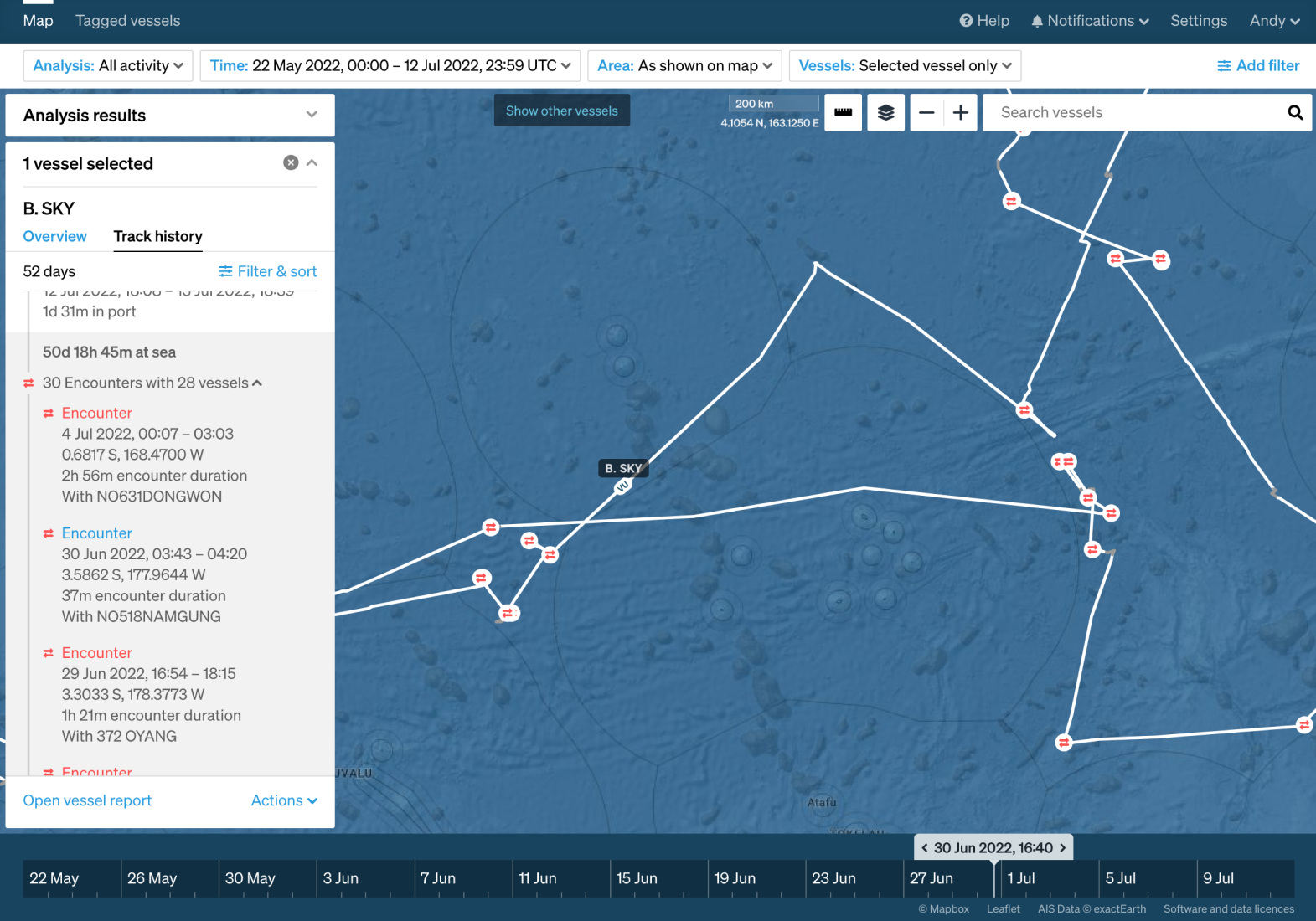
Analysing vessel encounters on the high seas
Improve collaboration by working from a shared, common operating picture
Different teams have differing areas of responsibility, but often a shared requirement to understand the maritime domain and how it relates to their work. Starboard supports different teams with different analysis types.
Currently in Starboard there are three analysis types:
• All activity
• Fishing (includes WCPFC, FFA, and IOTC vessel registration information)
• Biosecurity risk (flags vessels for certain pests, based on their history)
Starboard works on any device with an internet connection, enabling critical information to be accessed by a frontline staff member with a mobile device, as well as a team of analysts viewing a large situational awareness screen on an office wall.
Any view in Starboard can be shared with another user by copying and pasting the URL — enabling teams to share and discuss the exact vessel, activity, and location quickly and accurately without the need to email screenshots, or download and manage complex data.
Starboard works with multiple sources of data, and in partnership with customers we can integrate bespoke data sources to provide more insightful analysis.
We work in the declassified, but private and secure, domain. This enables rapid data sharing across authenticated users, without the speed and legal hurdles that come with distributing classified data. Once data is declassified, but still private, we can ingest, analyse and distribute the resulting intelligence to users in your organisation.
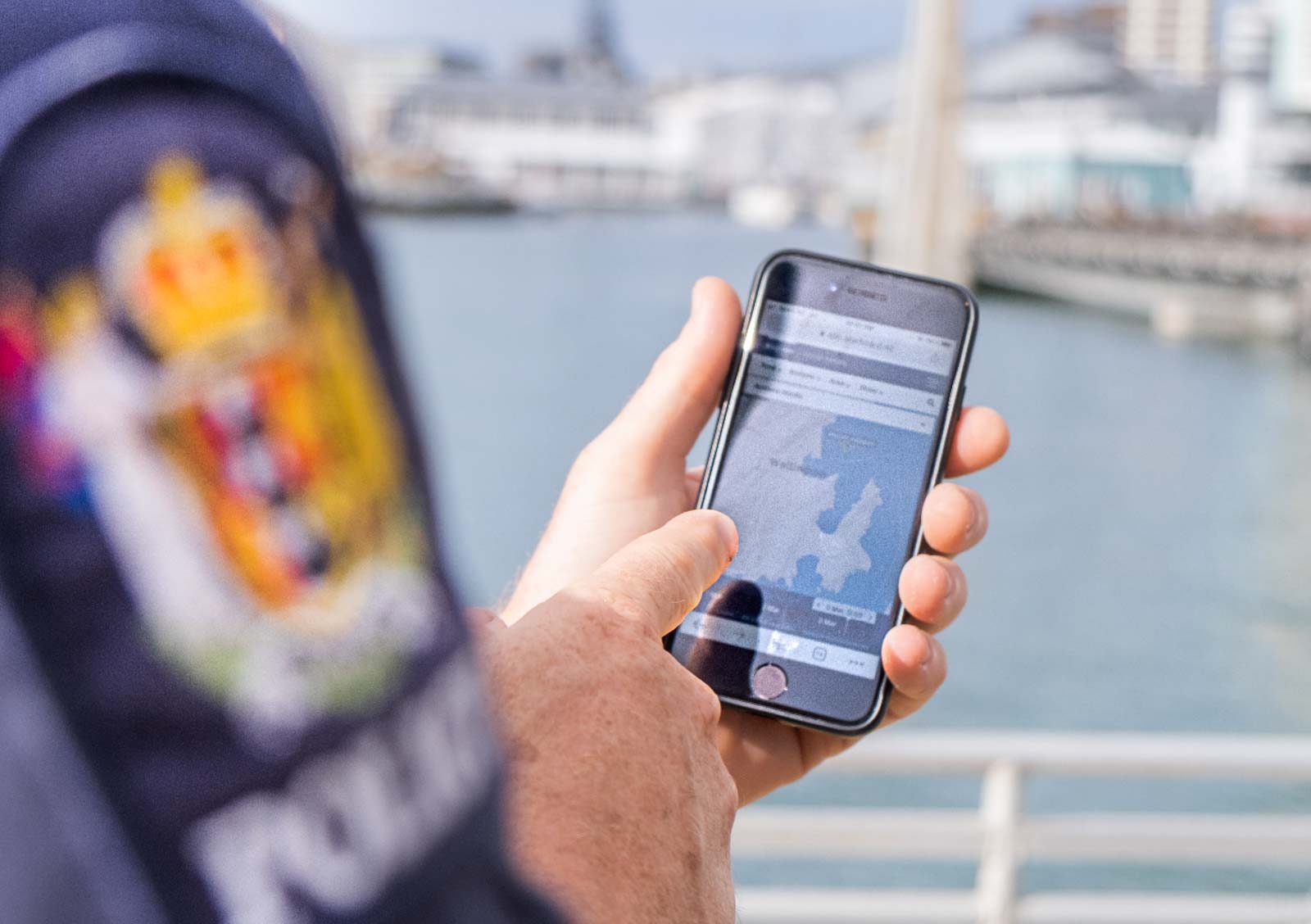
Starboard in the hands of front line staff
